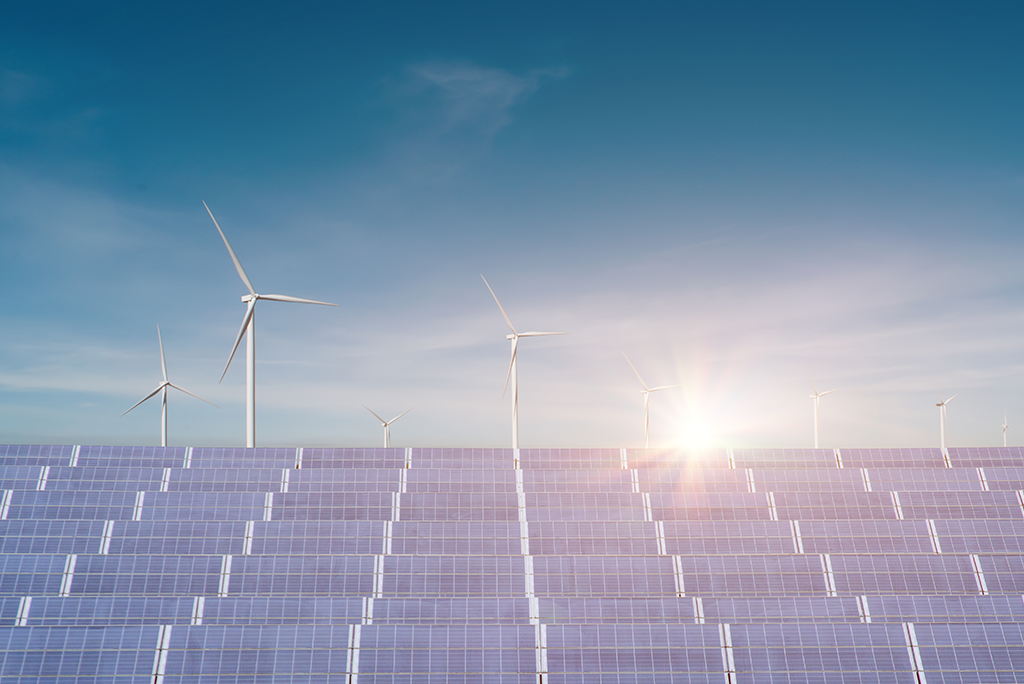
Global temperatures are soaring. Since pre-industrial times, human activity has warmed the planet global by 2 degrees Fahrenheit. Any further warming could be potentially catastrophic. Integrating renewable sources such as wind and solar into energy grids is vital to helping governments reach zero carbon electricity generation. However, there is a major problem: renewables are not yet advanced enough to solve supply and demand issues during times when there is not enough wind or sun to operate.
“As renewable sources take over the energy mix, utilities won’t be able to quickly spin up more supply by burning fossil fuels,” writes Matt Simon in Wired. “So a future grid that runs on an often intermittent supply of energy from renewables will need to be far more flexible to compensate.”
However, breakthroughs in clean energy technology—some driven by artificial intelligence (AI)—may soon solve the grid’s supply and demand challenges.
How Artificial Intelligence Can Help Solve Supply and Demand
AI is helping make clean energy a reality. As Josh Lewis in upstream reports, a commercial-scale demonstration facility will be built in California using a revolutionary solar technology from Australian company Woodside Petroleum in partnership with the renewable technology company Heliogen. The 5-megawatt demonstration facility will employ “artificial intelligence-enabled concentrated solar technology,” which is expected to deliver clean energy almost around the clock.
The facility will use “advanced computer vision software that precisely aligns an array of mirrors to reflect sunlight to a single target on the top of a solar tower, thereby enabling low-cost storage in the form of high-temperature thermal energy,” writes Lewis.
The company’s chief executive Bill Gross told upstream that the technology has the potential to transform the industry by turning sunlight into a zero-carbon source of heat, power, and hydrogen that is almost always available.
“Although costs of large-scale solar are falling, conventional solar technologies are not yet cost-competitive with fossil fuels in most energy markets due to their intermittent availability,” he said, adding that Heliogen’s technology “aims to close this gap through the use of AI, software and thermal storage.”
The two companies plan to market the technology in Australia and the U.S.
AI can also give operators greater insight into supply and demand issues. For example, digital twin technology, which provides a virtual representation of physical grid systems, can help operators prepare for various scenarios in which supply and demand affect grids, such as storms and heatwaves. Furthermore, AI can enhance the system’s ability to predict cyber attacks.
“The more you can see it in advance and run the scenarios of what might happen, and then to have it in this digital world as you’re seeing what’s going on in the physical world, is critical,” Sheila Hollis, acting executive director of the United States Energy Association, told BizTech. “I see it as an extraordinary leap and further sophistication of how you respond in difficult times, but also how you plan operations and maintenance in advance.”
With global temperatures rising, incorporating renewables into the power grid is more important than ever. While renewable sources are not yet advanced enough to solve the power grid’s supply and demand issues, breakthroughs such as these will undoubtedly accelerate their use.
What Will It Take To Reach The Goal of Zero Carbon Electricity Generation?
Aside from doing more to deploy clean energy resources, we need breakthroughs in technologies that will allow us to supply the power grid with clean energy even during windless days, cloudy weather, and nighttime.
Join IEEE Educational Activities and IEEE Power & Energy Society as we discuss the science behind climate change, net zero emission targets, policies, and technologies that will help transform our world onto a clear path to clean energy and decarbonization.
Register now for the free live virtual event, “Clean Energy and Decarbonization: Science, Targets, Policies, and Technologies”. This panel session features David Turk, US Department of Energy Deputy Secretary; Professor Ronald Prinn, Director of the MIT Joint Program on the Science and Policy of Global Change; Brian Gemmell, Vice President and Chief Clean Energy Development Officer at National Grid-USA; and Arshad Mansoor, President and CEO of Electric Power Research Institute (EPRI).
Listen to our panel of speakers about their thoughts, ideas, and solutions to this challenge, as well as new innovations we can build on to achieve a carbon-free future.
Please note that this event will be recorded and available on-demand after the live session concludes.
Resources
Gross, Natalie. (25 October 2021). How Technology Can Help Stabilize the Electrical Grid. BizTech.
Lewis, Josh. (18 October 2021). Woodside teams up with Bill Gates-backed Heliogen on ‘breakthrough’ solar technology project. upstream.


[…] and technical— to overcome. However, as prices continue to fall and technologies improve, the future of renewable energy looks more positive than […]